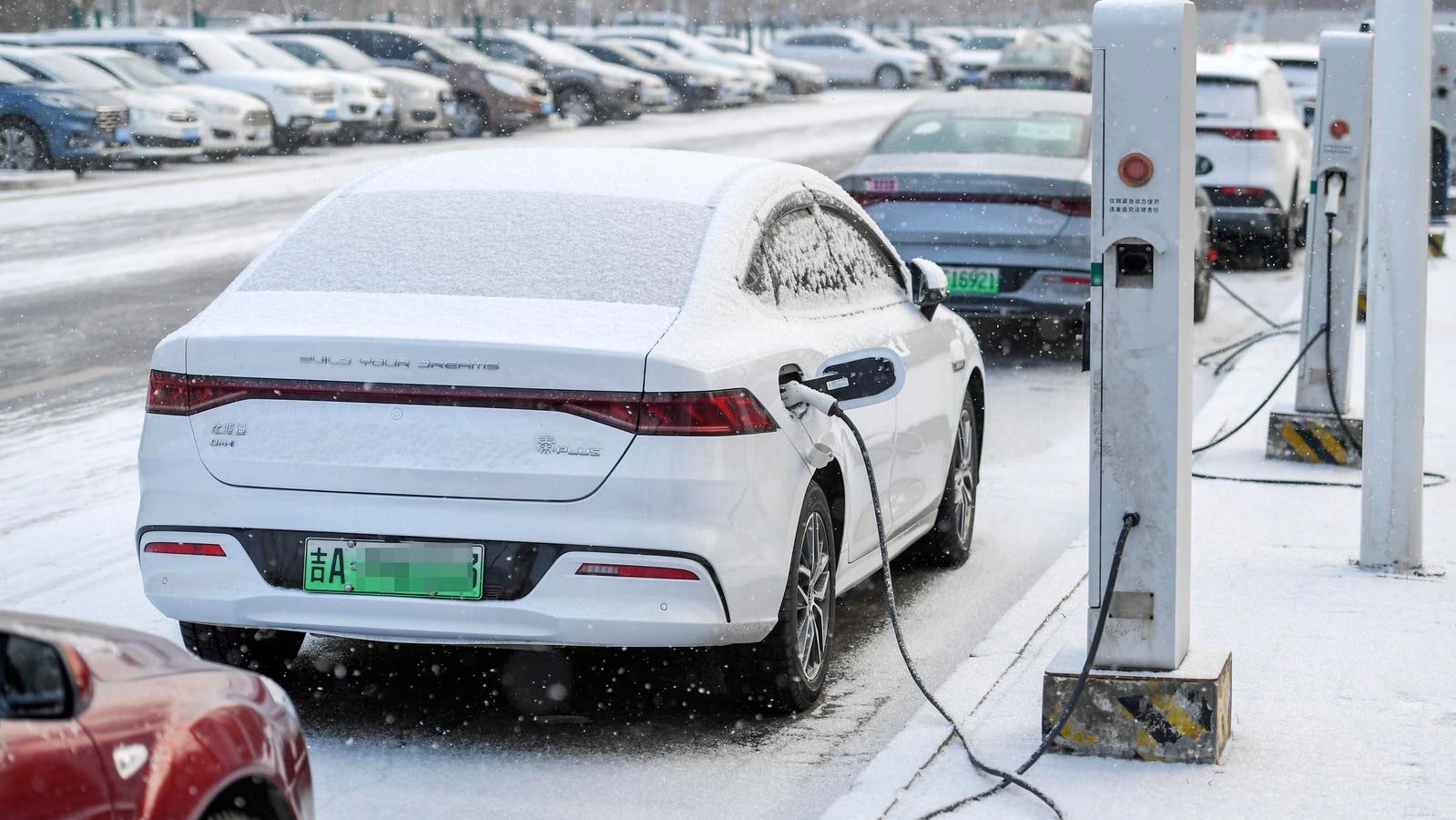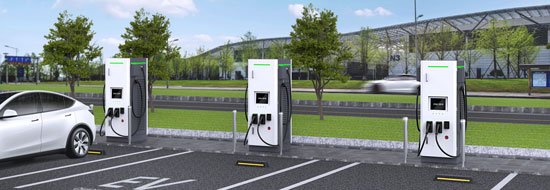Anyone who owns an electric vehicle who doesn’t live in Florida or California knows that cold messes up electric vehicles, reducing their driving range and causing them to take longer to charge.
Electric car plugged in to an outlet recharging outdoors in winter snow
Why? Low or freezing temps makes the electrolyte fluid in battery thicken. That produces a decrease in its overall charging capacity and slower charging, which is why you sit there and sit there. The lower the temperature, the less range and the longer the charge.
Not all electric cars are the same, though. Many newer models offer software specifically designed to lessen the effects of the cold. Read on for more tips on charging in freezing weather.
CLOSE UP: Touchpad on dashboard shows a notification of the battery being full.
Don’t expect to see your gauge read “100%”
Some software prevents a 100% charge when it’s freezing so the battery can function better. Consult your dealer or owner’s manual to confirm before suspecting there’s something wrong, or find and join a Reddit group and search for your vehicle to talk to other owners.
Don’t expect your usual range
Some companies exaggerate range to begin with, or they report the mileage they find after testing in optimal conditions – milder weather, for example. If you suddenly see your stated range plunge rapidly, you can blame it on the cold. It can be alarming, but it’s actually “normal” in some vehicles to see a drop of around 20% at 32 degrees and as much as 40% at 22 degrees and under.
Buy a car appropriate for the weather where you live
If it’s sunny and relatively warm all-year-round where you live, naturally you don’t have to worry about freezing temps compromising your range and charging. But if you live somewhere where temps can be extreme, look up the best electric vehicle for those climes. For instance, a lithium-ion battery handles cold better than a lithium-iron-phosphate (LFP) battery.
Allow more time to charge at public stations
Like you, a charger sometimes needs a little time to warm up in the cold. For example, there are liquid-cooled cables designed to regulate the temperature of public fast chargers, as well as other hardware affected by extreme weather.
But since cold affects every electric vehicle, expect longer lines at public charging stations during below-freezing weather. Also, if possible, pick a station with an enclosed space because those chargers, naturally, won’t be subject to harsh weather conditions and are more likely to be operational than, say, that lone charger by itself, outside a convenience store.
Charge station for electric cars. Electric cars at charging station. 3d rendering.
Charge during off-peak hours
Not only are chargers busy during a workday, heavy use during those times can put a strain on them, resulting in reduced power and longer charging times. Charge at dawn, or late at night. Bring a book.
Keep Your Vehicle Plugged In At Home
Even with the trickle of electricity you have at home (without a fast-charger), keeping your vehicle plugged in helps to regulate the battery temperature. Also, if your stated range is currently below 20%, don’t let the car sit in the freezing cold without charging. You might find the battery at 0% and thus stranded. Key word: “Might.” They obviously haven’t got all the bugs out of electrics, and charging them.
Park in a garage where possible – if you have a garage at home, keep your car inside (on charge if possible) during the cold weather.
Do you have any tips on charging electric vehicles during below-freezing weather? Please comment, and I’ll respond.
[ad_2]
Source link




